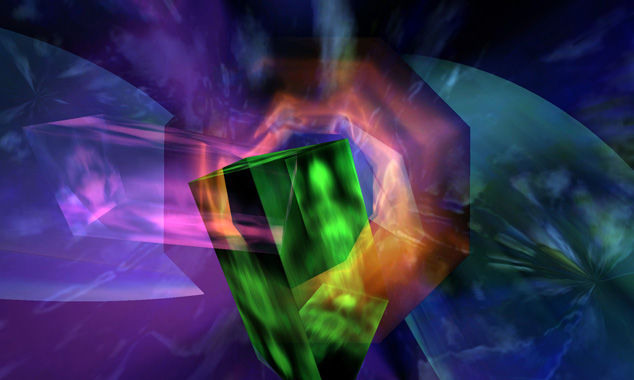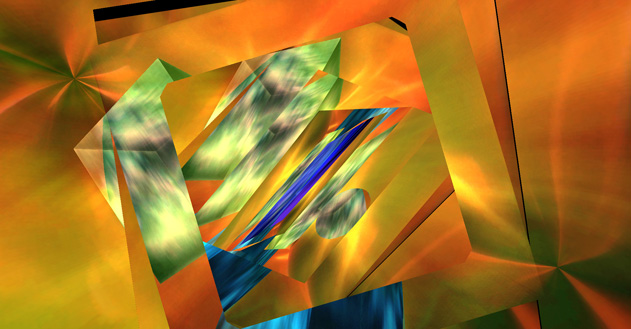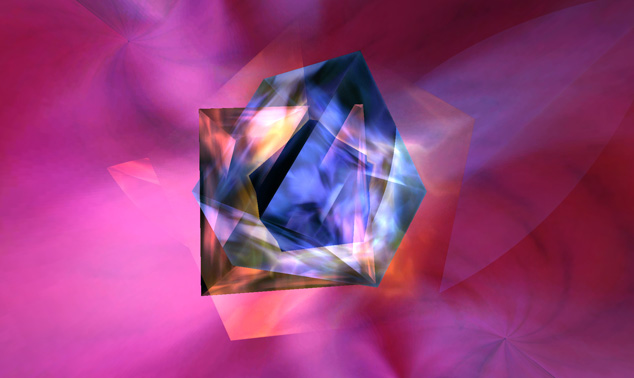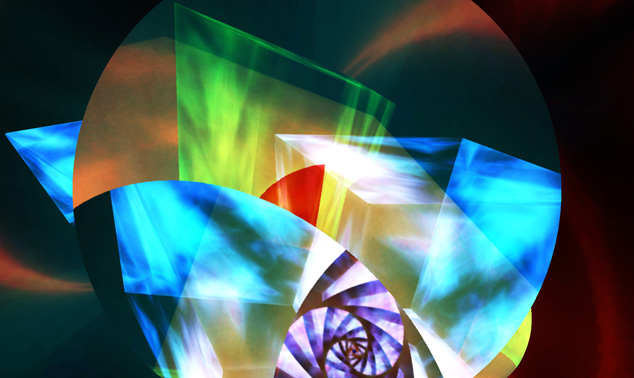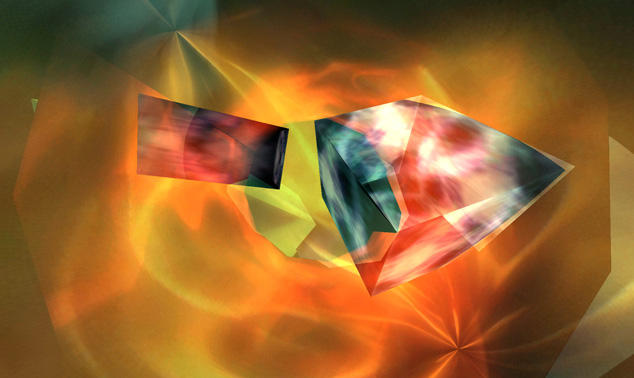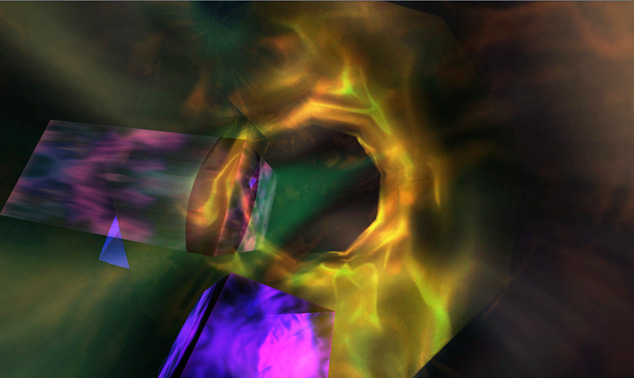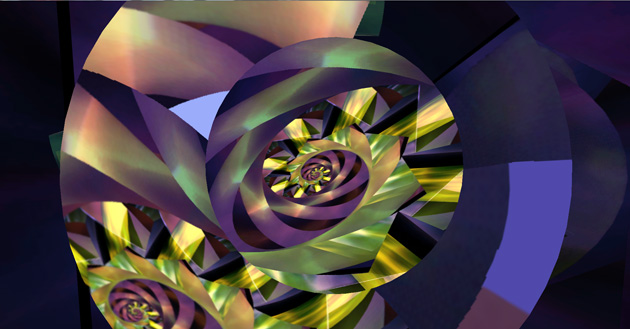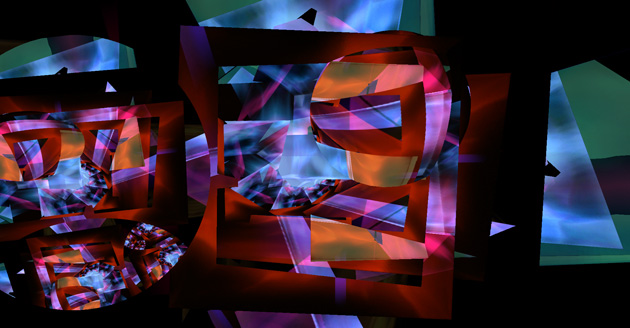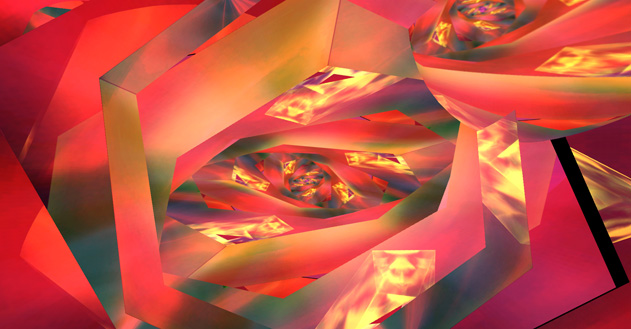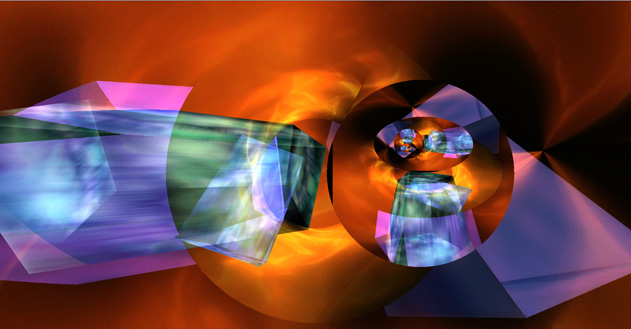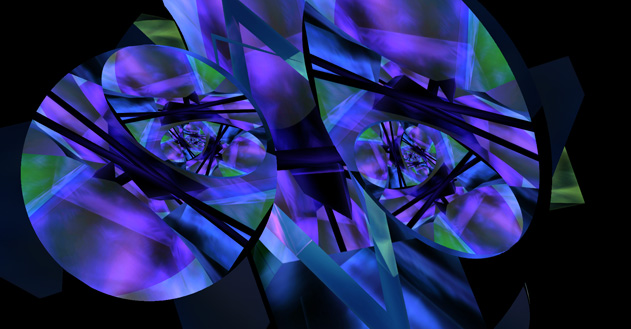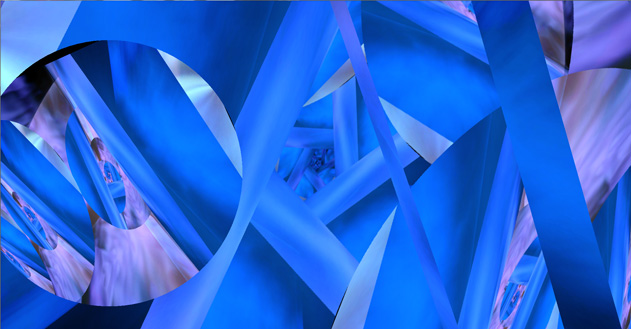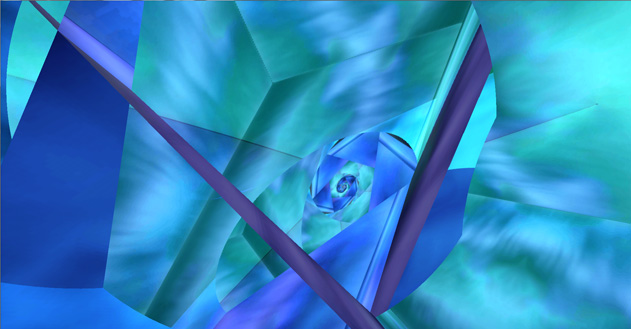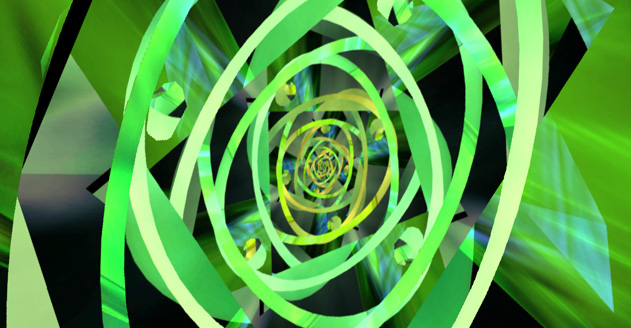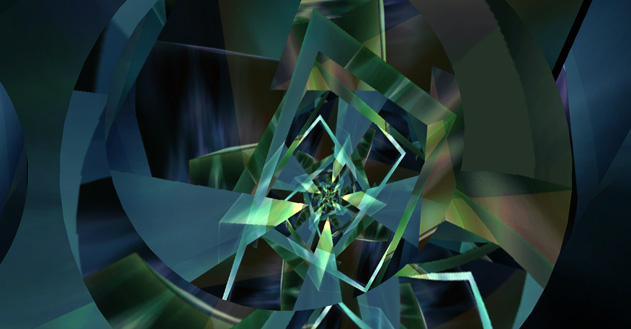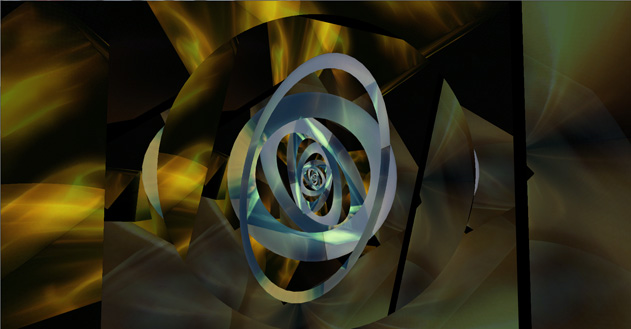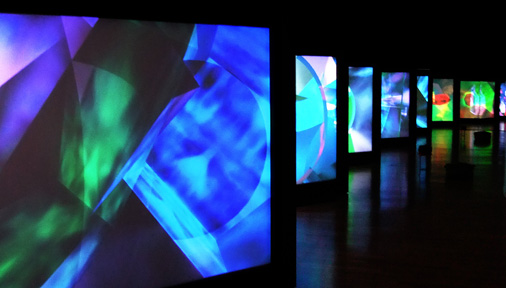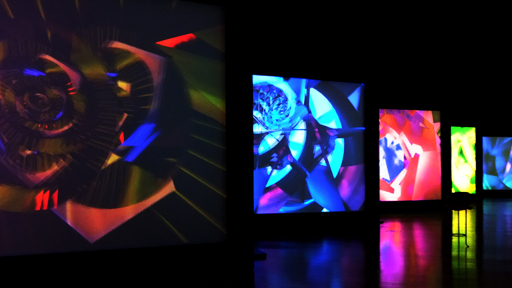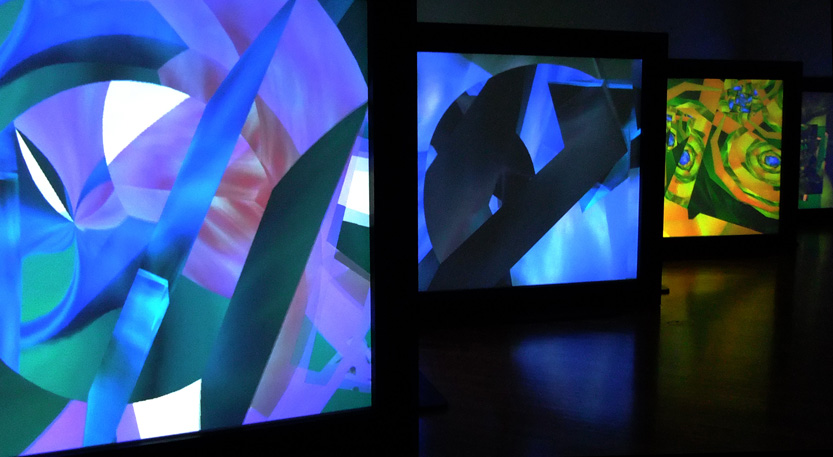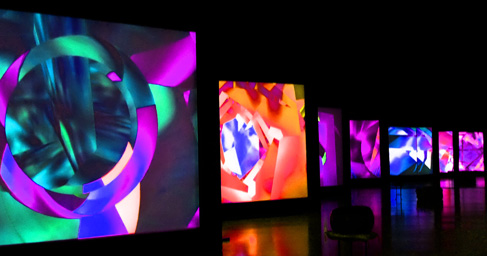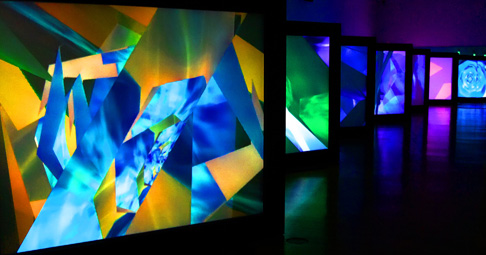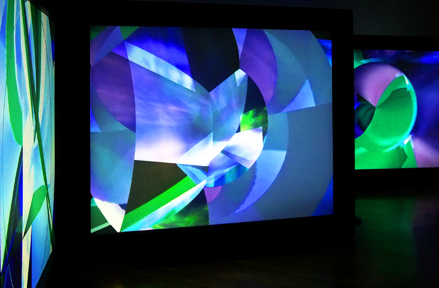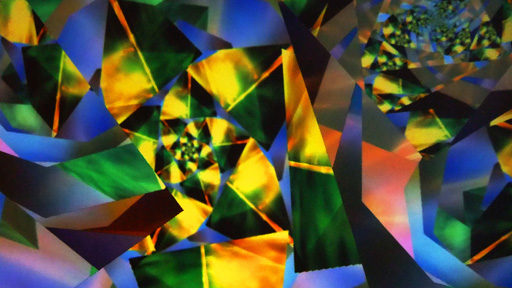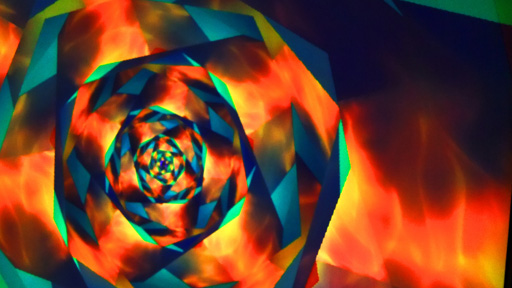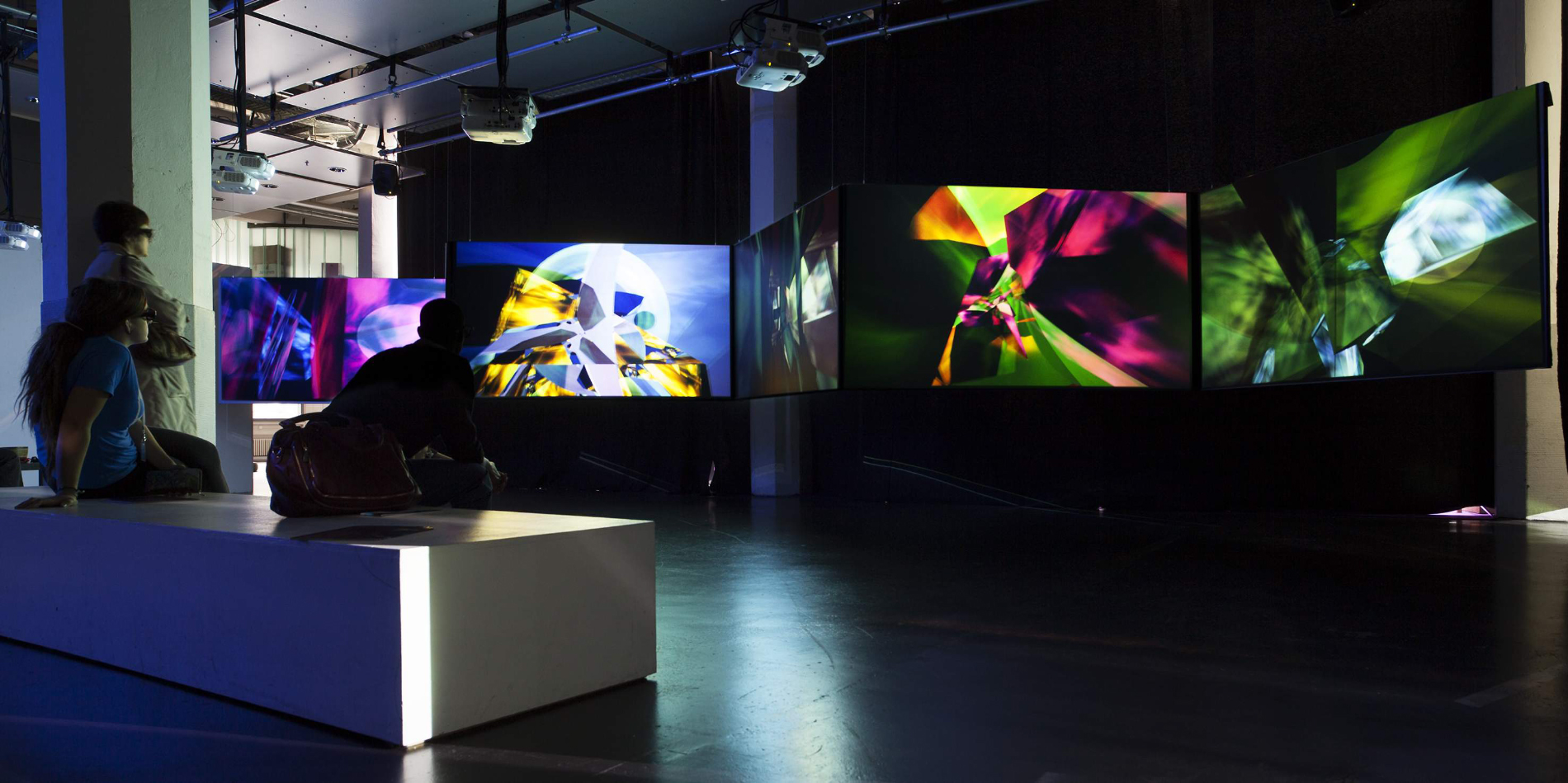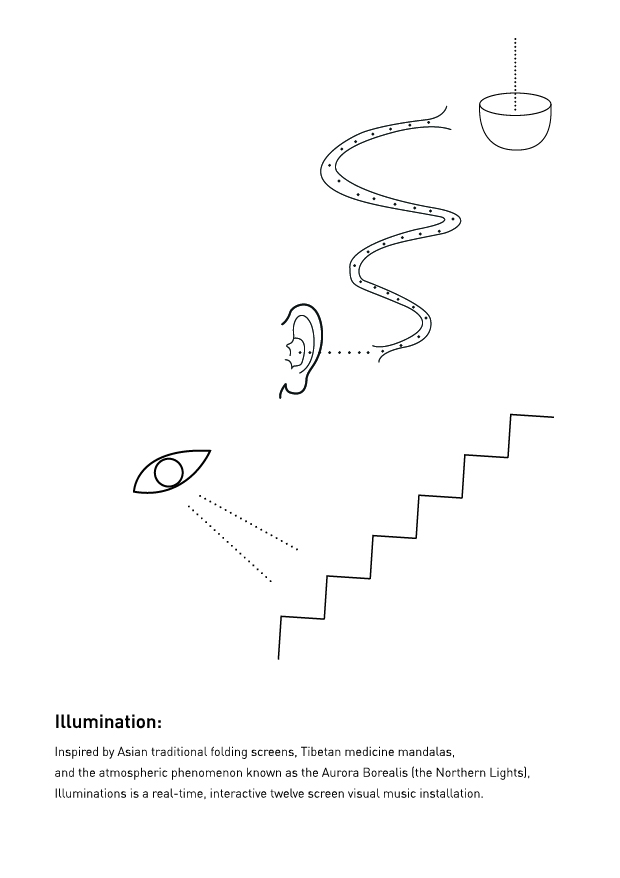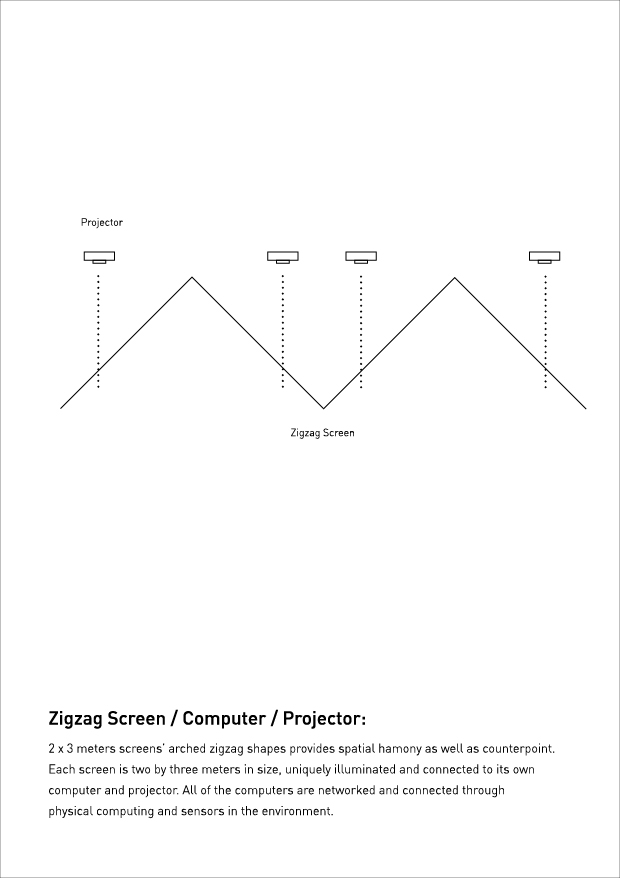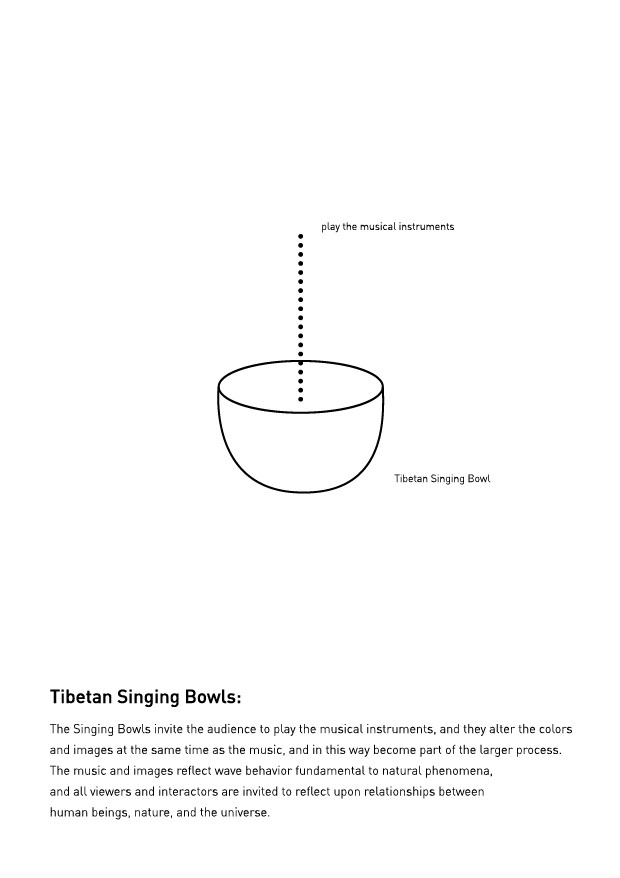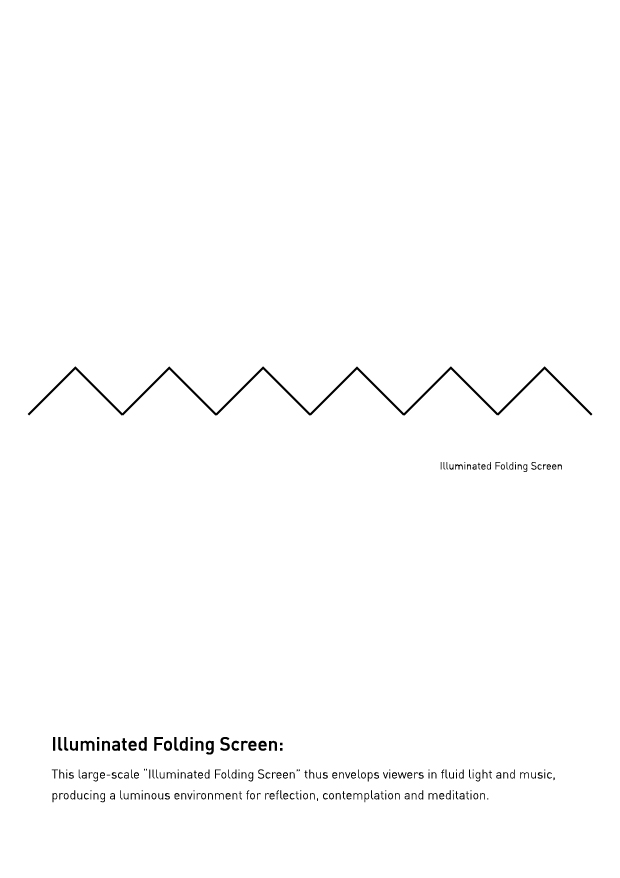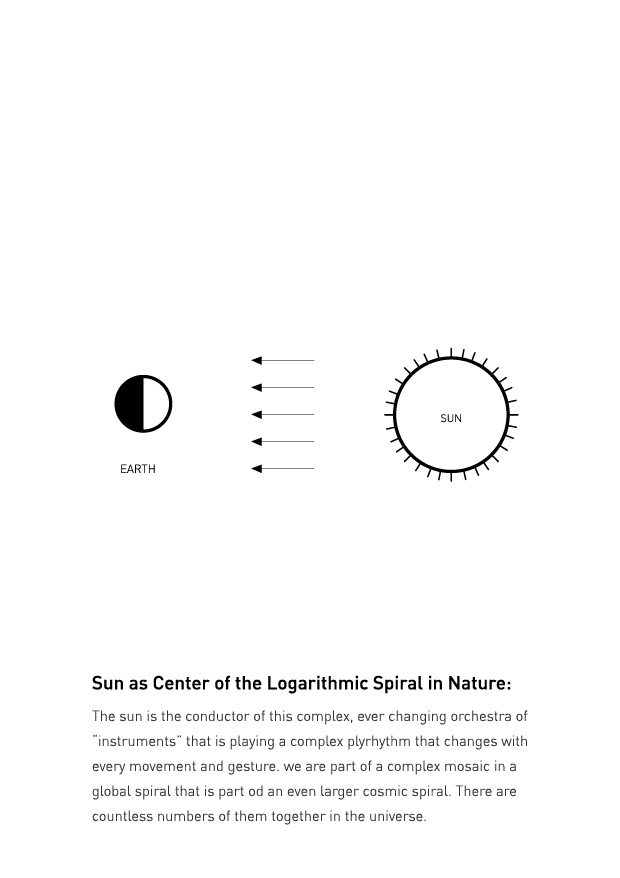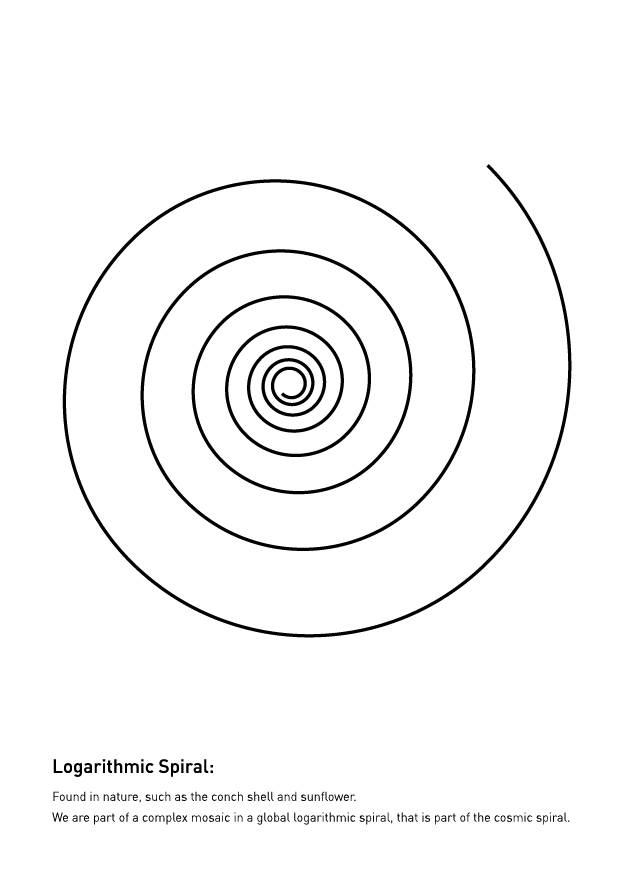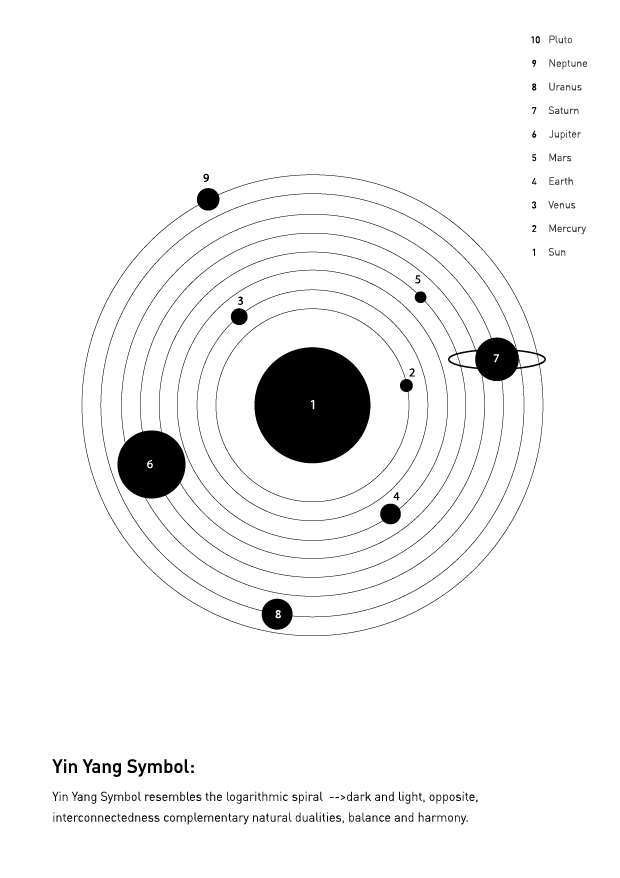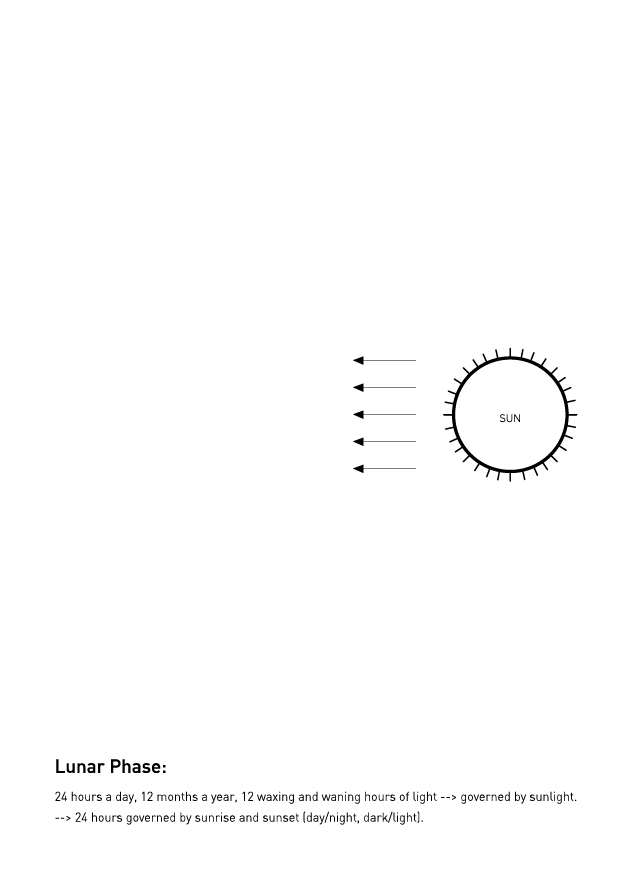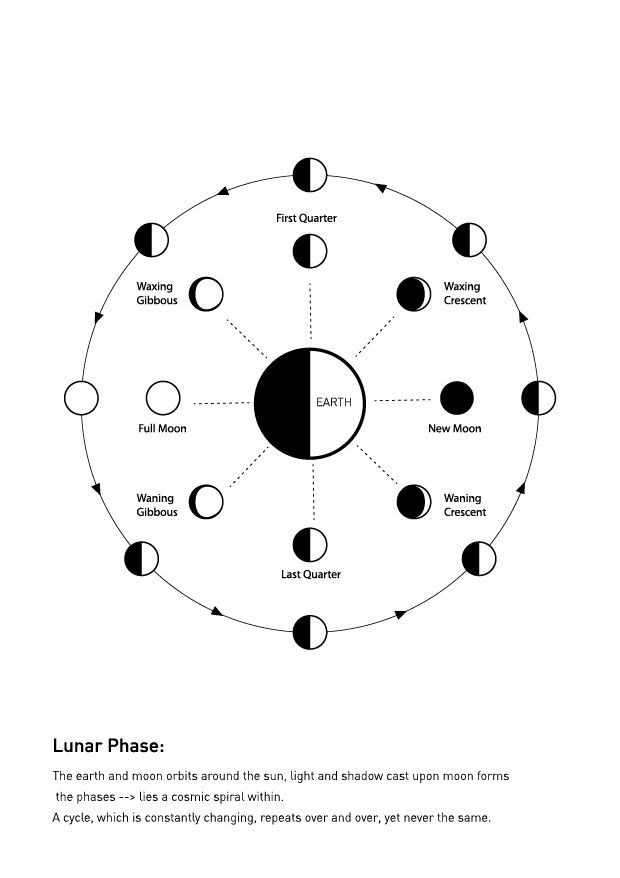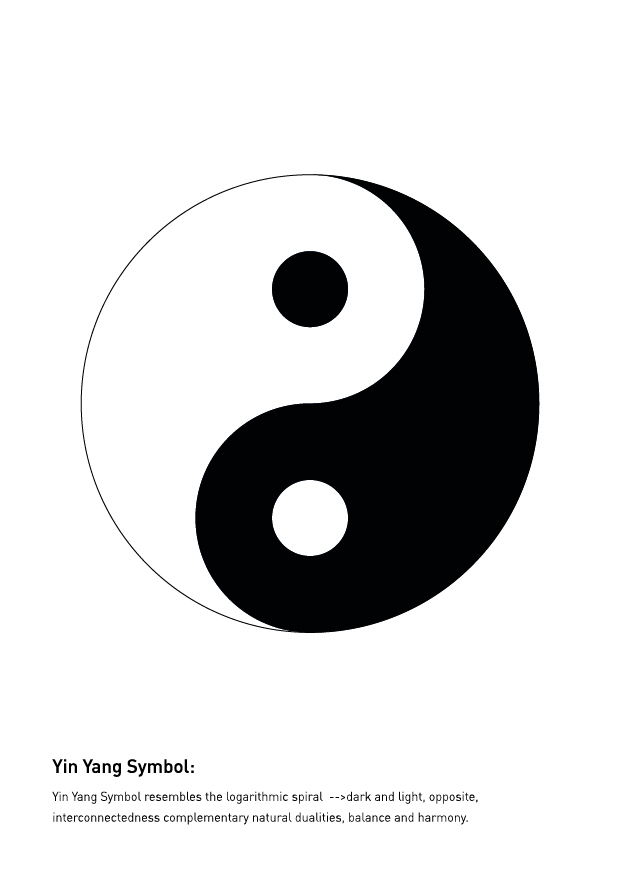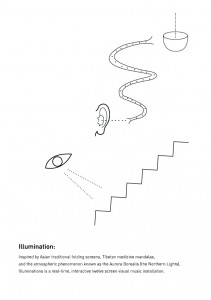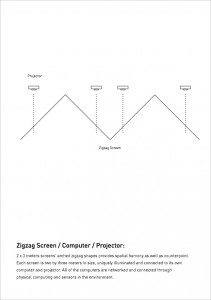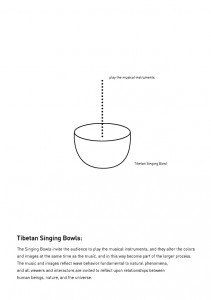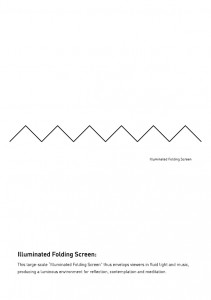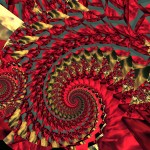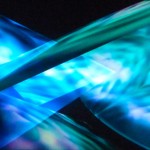Inspired by Asian traditional folding screens, Tibetan medicine mandalas, and the atmospheric phenomenon known as the Aurora Borealis (the Northern Lights), Illuminations is a real-time, interactive twelve screen visual music installation. Each screen is two by three meters in size, uniquely illuminated and connected to its own computer and projector. All of the computers are networked and connected through physical computing and sensors in the environment.
Illuminations is site specific, designed to engage the architecture hosting it and the people who inhabit it. In the ADM Gallery, a long curved room of approximately 30 meters in length, the screens’ arched zigzag shape provides spatial harmony as well as counterpoint. The physical screens are free standing and mirrors placed on the walls at both ends of the folding screen reflect it into a longer arch of approximately 90 meters. This large-scale “illuminated folding screen” thus envelops viewers in fluid light and music, producing a luminous environment for reflection, contemplation and meditation. Like a rainbow river, the flowing colors are softly cast onto the skin of viewers so that they are bathed by it. In a reflective state, we can recognize our actual connection to broader natural phenomena, detect patterns in time and space across domains of life and nature, including our own biorhythms and those of other living things, and engage them together with other human beings. It becomes both an individual and a social experience as multiple people can “perform” the screens solo or together.
Using sensors embedded in objects from South Asia (Tibetan Singing Bowls, Indian Ottomans, folding screen), and local plants, the audience is implicitly asked to reconsider relationships between organic systems, material and digital cultures, and discover new connections between them. Objects are digitally sensed and their data made dynamic, so that their qualities are extended, translated and transformed into other modalities and media forms.
Illuminations arises from the nexus of multicultural migratory flows present in Singapore and in global transnational media culture, and reflects the unique context in which it was created. It recognizes and seeks to transcend traditional “East-West”, “Ancient-Modern”, “Nature-Technology” relationships by developing alternative processes and content in its conception, production, and dissemination.
Post-digital culture may be informed by similar recombinant “rematerialization” of multimedia, retaining some original meanings and functions, within an accelerated evolution of diverse possibilities. Within the physical-digital metaverse, the ability to connect to and communicate with anything measurable becomes possible. The increased powers to sense and affect the physical condition of other living things through this technology highlights the responsibility and need for our interactions to be centered in empathy, compassion and ethics. With this as a guiding principle, only non-invasive sensors are used with the living plants in Illuminations so as to carefully “listen” to them.
I use large-scale structures for “writing” this work. It is a “narrative” with no beginning, middle, or end – or at least not necessarily in that order. It begins and ends, goes to the middle, and begins again, and again and again, and never again the same. Each phase is a different mood or setting for thoughts, feelings, memories, and narratives of the viewers in the audience. Each of the individual 12 screens’ images is different, and all screens are related and share data, and in this way they behave like individual voices in a musical ensemble playing together, and with input from the audience. It is like a large visual-musical instrument for the audience to improvise upon as part of a collective, multimodal stream of consciousness.
The Aurora Borealis is the result of charged electrons from solar winds interacting with elements in the earth’s atmosphere. Following the lines of magnetic force generated by the earth’s core and through the magnetosphere, it forms magnificent flows of colors and light. In a larger sense, the electromagnetic spectrum contains all things made of waves (also particles), including our cells and senses, and some theories suggest that arising from it, our human consciousness. The states of dreaming, waking, engaging and reflecting affect and are affected by waves in the world around us.
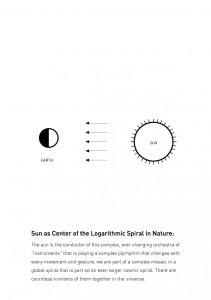
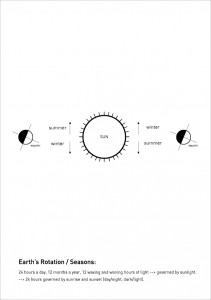
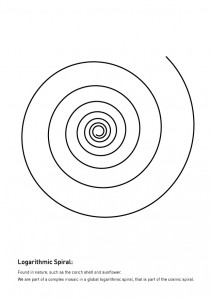
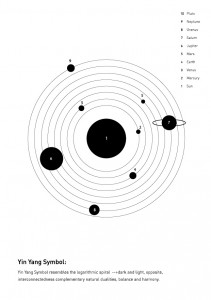
This piece creates a pure light and sound environment using the same most basic forms found throughout nature: the waveform. All of the colors and sounds are produced using waveforms, and their transformations manifest a constantly changing polyrhythm based on the interactions of the waveforms. While there may be cycles of movements, shapes, colors and textures, they are so complex that they never repeat exactly as before. Each moment in time is new, with a different state, different combinations of connections and elements, and being so varied it becomes an emergent system. A conceptual model representing this structure would take the shape of a constantly flowing, ever transforming, three-dimensional logarithmic spiral. Computers can actually visualize and sonify these models of time and space for us to contemplate and interact with. In nature, the logarithmic spiral is found in the conch shell and plants such as the sunflower. The cyclic shape of flowers echoes the sun itself, and the leaves that receive sunlight are nature’s antennae. Inside the leaves, the light is transformed through the intricate algorithm-like process of photosynthesis. As the light waxes and wanes and the daylight comes and goes, the leaves produce the vital oxygen we need to breathe. These 24-hour life cycles have been governed by sunrise and sunset for millions of years, and we evolved together with them. Trees, plants, animals—all living organisms, including our own bodies—are connected, affected by the earth’s rotation on its tilted axis, and around the sun over the course of a year. 24 hours per day, 12 waxing and 12 waning hours of light as the average, 12 months for spring, summer, fall and winter, and then repeating, are the basic elements. The sun is the conductor of this complex, ever changing orchestra of “instruments” that is playing a complex polyrhythm that changes with every movement and gesture. We are part of a complex mosaic in a global logarithmic spiral that is part of an even larger cosmic spiral. There are countless numbers of them together in the universe.
If we look at the different Asian cultures and philosophies, including those of the Tibetan, Chinese, Indian and Indonesian, we see a concern for oneness with the universe as well as the reflection of the cycles of nature, often represented by forms similar to spirals. In Chinese and Daoist philosophy, the Yin-Yang symbol resembles the logarithmic spiral, with dark and light, opposite and equal sides, representing the interconnectedness of complementary, natural dualities, male and female, as well as balance and harmony. When the symmetrical balance is transformed or changed, there is circular movement. The study of the mandala, as a form of meditation, is also a study of cosmology. To become aware of the mandala is to become conscious of our surroundings, and it is this consciousness that helps us see our connections with each other. Upon recognition of our connection to these phenomena, including the plants and living things around us, especially reflected in medicine mandalas that include images of healing plants, it is possible to reposition and transform our thinking, rewire our brain, and expand its capacity for reflection and connection to the larger global environment and beyond, the universe. This is literally made possible today given the use of sensors and computing systems to translate the signals from the environment into human sensory modalities. A sense of awe, the sublime, and at the same time a fundamentally human connection respecting life and the physical environment is suggested and reinforced in Illuminations through the physicality of the screens, the light, the sitting and meditating, the playing of Tibetan Singing Bowls, and the biofeedback of plants. We hear OM (AUM), which are the breath, the sound and the image. O stands for breath, M the same as W for wave and water.
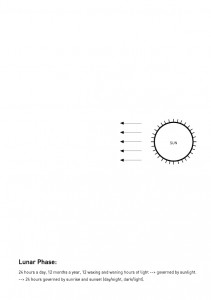
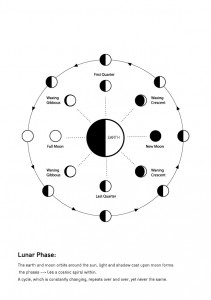
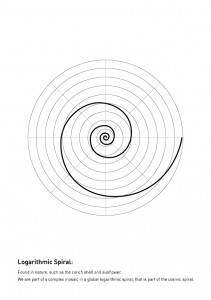
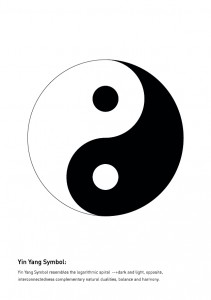
Just as wave phenomena include both image and sound, so this work includes original real-time music in addition to moving images. It is influenced by Indonesian, especially Balinese Gamelan music and shadow puppet theatre (Wayang Kulit), which are highly polyrhythmic and meditative. They are also improvisational with musicians performing the visual imagery at the same time they perform the musical instruments. The music of Illuminations is similarly polyrhythmic and connected directly to the real-time (live) moving images by common physical-digital processes. The Singing Bowls invite the audience to play the musical instruments, and they alter the colors and images at the same time as the music, and in this way become part of the larger process. The music and images reflect wave behavior fundamental to natural phenomena, and all viewers and interactors are invited to reflect upon relationships between human beings, nature, and the universe.
The purity and complexity of the colors, light and sounds in Illuminations are not meant to serve as a replacement for nature. Rather, the use of technology here seeks to illuminate our awareness of the fundamental elements of nature. The networking of the computer systems decentralizes and complicates the tendency to place the human being at the center of all nature. We are part of a huge, dynamic, mutating “fractal”, an ecology of many rhythms of life, constantly interacting and evolving, like interconnected spirals made of multi-, hyper-, and mega-cycles that repeat but never exactly the same way. We reflect upon the cycles in a reflexive process, as they are the basis of our neurological activity, our thoughts, memories, dreams, and our actions.
This large-scale visual music installation was produced while residing in Asia. Having connected with the people of such diverse cultures in this part of the world and being immersed in the study of the ancient civilizations put me in awe of and respect for the philosophies and cosmologies present here. Many of these Asian philosophies convey the idea of wholeness and unity with the universe, something I also strongly subscribe to, which inspired the creation of Illuminations. It is my hope that this environment for contemplation and meditation on physical-digital sound-light phenomena can contribute to increasing awareness of our human connection to nature and the larger universe, and bring a sense of peace and well-being, with possible therapeutic effects, to those who engage it.
Vibeke Sorensen
Professor and Chair
School of Art, Design and Media
Nanyang Technological University
Singapore
19 July 2013
—
Concept / Images and Animation / Music / Pure Data Programming: Vibeke Sorensen
Acknowledgements
Curator: Robert B. Epp
Furniture Design / Construction: Fabrizio Gallo, Ong Kee Sing
Custom Programming / Custom software: Marilia Bergamo, Biju Dhanapalan, Miller S. Puckette, Nagaraju Thummanapalli
Collateral / Brochure Design: I-Hsuan Cindy Wang
Printing: Garden City Publisher Ltd, Taiwan
Thanks also to Xian Min Chia, Yee Cher Chong, Bharat Singh, Judy Tham, Kirti Trivedi, Cristina Venegas, my Personal Assistant Ms Aw Lee Ting, and the ADM IT and AV Staff for their contributions, assistance and dedication in making this exhibition possible.

